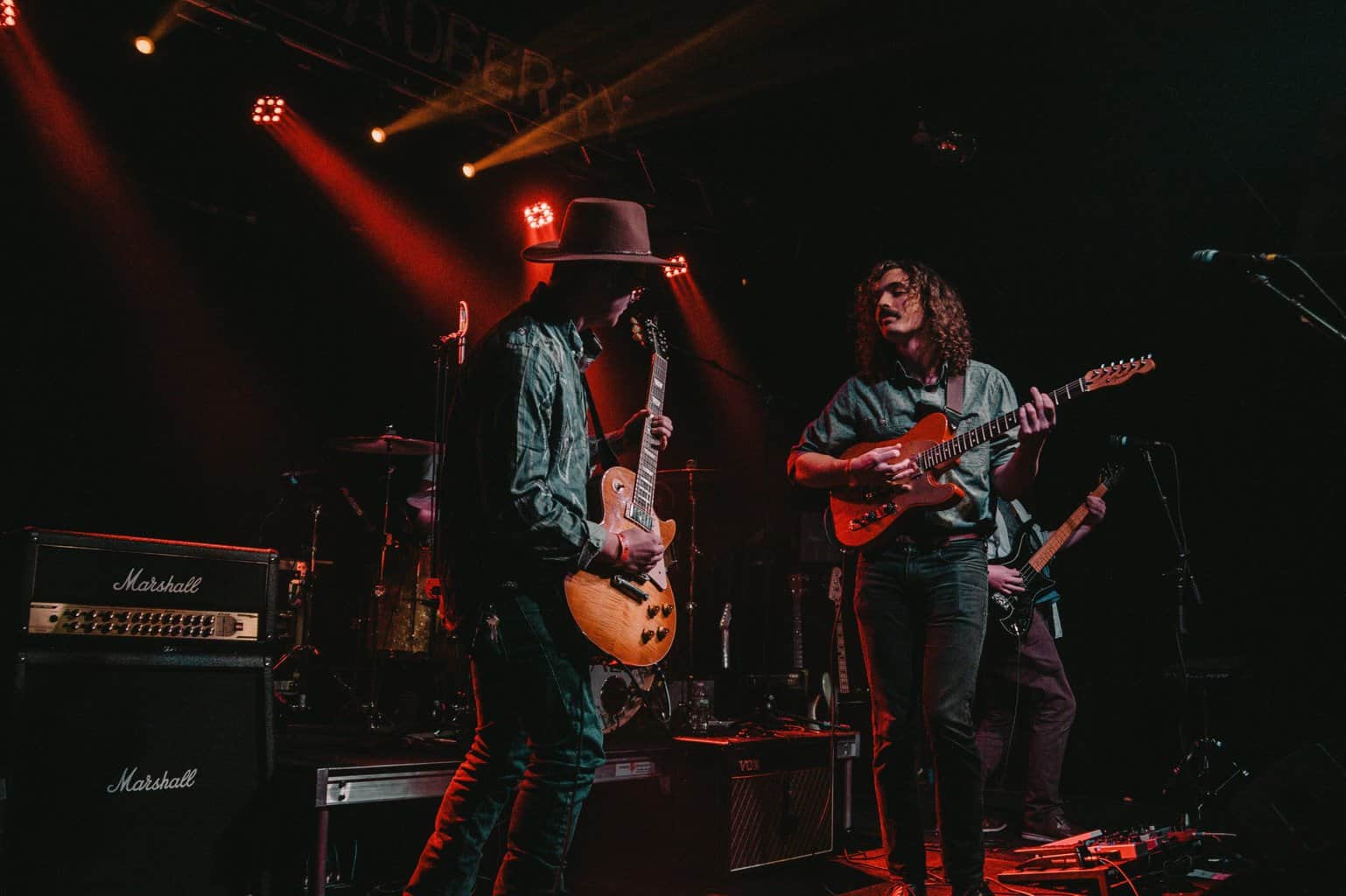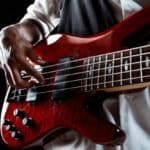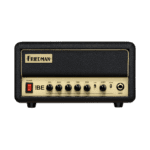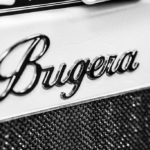Guitar amps are magical tools.
What would we do without them?
Our electric guitars would sound flat, weak, and unpleasant if we didn’t have amps.
So, after purchasing your first guitar, the second buy should always be a guitar amplifier.
However, some guitarists like to take everything one step ahead.
After buying an amp, they go for yet another one.
But why does this occur?
Do guitarists play with multiple amps? And if that’s the case, which are the reasons behind it?
Stacking multiple amps has many benefits. It strengthens the guitar sound, or it balances both so you can combine the best characteristics of each amp. Also, they serve as a backup in case the first amp stops working.
So, are you planning to get a second amp? Maybe a third one?
Four amps? That’s insane!
Or maybe it is not?
There’s only one way to find it out: keep reading this article!
Is there a benefit from having 2 or more amps on stage?
Having more than one amp has some advantages.
First of all, having two guitar amps is helpful when switching sound textures. You could set one up with a certain configuration, and the other with a different one.
It’s similar to having different guitars and changing them for specific songs, but with amps.
Second, combining amps results in a mixture between them all. In other words, blending them is useful for complementing each other.
For example, let’s suppose you take a guitar amp that has lots of low end and gain. However, the upper-midrange is rather weak.
Now, combine that amp with one that has a good attack but lacks sustain.
As a result, you are getting rid of both weaknesses and leaving just their strengths.
All in all, having amps that sound different is a wise idea.
If you are still not convinced, then keep reading.
For recording, you can stack as many amps as you like
It’s a usual practice to stack different amps when recording at a studio.
The main purpose is to shape the tone so guitarists find the sound they are expecting to acquire.
Bear in mind that studio recordings are more detail-oriented than live performances.
This means that every feature is important for the final product (after all, there’s no turning back).
So, it is not uncommon to find guitarists paying too much attention to their gear in those situations.
If two amps or more are needed for the exact tone, so be it.
Reasons why it’s great to play with multiple amps at once
Plenty of reasons makes having more amps a favorable decision.
One of them is that they have prevention purposes.
Just think about it.
You are playing live, but you have such a stroke of hard luck that the guitar amp burns out.
The solution? Use the other one!
Simply plug the guitar in the extra amplifier and you are all set to continue with the show.
But oh, the second amp burned out as well? Easy, you still have a third one!
Also, when tone stacking 2 amps, you get the tonal diversity that we previously mentioned.
In this case, one amp compliments the lack of the other one. With two amps, you’ll forget about weaknesses, and leave room for a source of balanced power.
Additionally, two amps are used for the stereo effect.
Some techniques require having multiple loudspeakers.
Let’s see an example to show how this works.
Suppose that you are playing guitar with a delay effect pedal. The stereo outputs create an effect where sound bounces back and forth between one speaker and the other.
The same stereo effects apply to other pedals such as choruses or flangers.
Lastly, and this might be the least of the reasons, some have more amplifiers just to show off.
More specifically, when playing live, having a wall of amplifiers looks great for the performance.
It sounds rather silly, but in reality, it provides for an overall more “rockstar-like” atmosphere.
In the end, live performances are more than just sound. The entire setting affects the mood of the audience.
What equipment do you need to use 2 guitar amps at once?
There are three pieces of equipment (or methods) you can get to play with two amps simultaneously.
The first one is a pedal that has two outputs on it.
Generally, most delays, choruses, or any other modulation type effect pedal come with two outputs.
One is output A, the other is output B. All you have to do is connect the first amp to output A, and the second one to output B.
The second option is getting an AB/Y box.
It works just like effect pedals with two outputs: There’s one spot for output A and another for output B.
What’s great about an AB/Y splitter is that you can select which amp you want to play with.
You can change from amp A to amp B, or you can connect both simultaneously.
The third and last method is the easiest of them all.
It’s called Daisy-chaining, and it requires you to connect the two amps with a standard instrument cable.
One of the amps should have two or more inputs for it to work. There, you connect your electric guitar to the first input of the first amp, then connect the second input to the first input on the second amp.
This last method is a quick solution, but it has some disadvantages.
First of all, you can’t switch between one amplifier and the other.
Second, amps could cancel each other out, making the final sound relatively fragile.
If this is okay with you, then try it out.
Tip: Pick amps that complement each other
If you opt to stack similar amps, then you are bound to accomplish a huge sound.
It’s like giving steroids to your guitar (without the negative consequences, that being said).
You could also set them up so there’s some delay between one and the other. Eventually, it sounds as if two guitars were playing simultaneously.
Nonetheless, mixing distinct amps also leads to gratifying tones.
Again, this has to do with balance: complementing the lack of one with the main strength of the other.
For instance, you can combine a high gain tone amp (such as the Marshall JCM800) with a clean Fender. The Fender amp will surely give you that sweet high-end sparkle, while the Marshall will provide that in-your-face rock tone with strong mids that cut perfectly into the mix.
A combination of both assures great results.
How many amps are too many?
You should be fine playing with two amps.
You either reinforce your guitar sound or balance them and get the best of both worlds.
You could try mixing up more and adding one extra amp, but that’s already a lot.
Truth is, it’s unnecessary. Sure, you can play the Rockstar (maybe you are) and have a wall of amplifiers.
However, it’s something that’s just done to parade and boast for a while.
Plus, do you really have the money to buy so many amps?
Maybe you do, I don’t know.
One way or another, two amps are fine. Trust me.
Is using 2 amps or more always better than going with just one?
This answer relies solely on your goals as a musician.
Maybe two amps are what you are needing.
If you want a really powerful sound, or if you’d like to have a stereo effect on your performances, then go with those two amps.
Now, some musicians have enough with one amp.
“Plug and play”, that’s it. It’s practical and easy.
Also, a quality amp can be sufficient for getting the sound you are looking for.
Maybe such an amp has all the settings that you expect to get with your guitar.
If that’s the case, two amps are unnecessary.
Always consider your objectives. Then, you will know whether you need an amp or more.
Lastly, consider that experimenting a bit may also get you good results. So, giving a chance to two amps would be a good idea.
To sum up
We’ll leave a short list of the reasons why guitarists use multiple amps.
The reasons are:
- Reliability (when one amp fails, there’s another to back it up)
- Tone stacking
- Sound complementation
- Stereo effect
- Looks cool
I hope this information has helped you. Now go get yourself a wall of amps.
If someone else finds it unnecessary, you just tell them all the details you have learned here.

Hello there, my name is Ramiro and I’ve been playing guitar for almost 20 years. I’m obsessed with everything gear-related and I thought it might be worth sharing it. From guitars, pedals, amps, and synths to studio gear and production tips, I hope you find what I post here useful, and I’ll try my best to keep it entertaining also.





